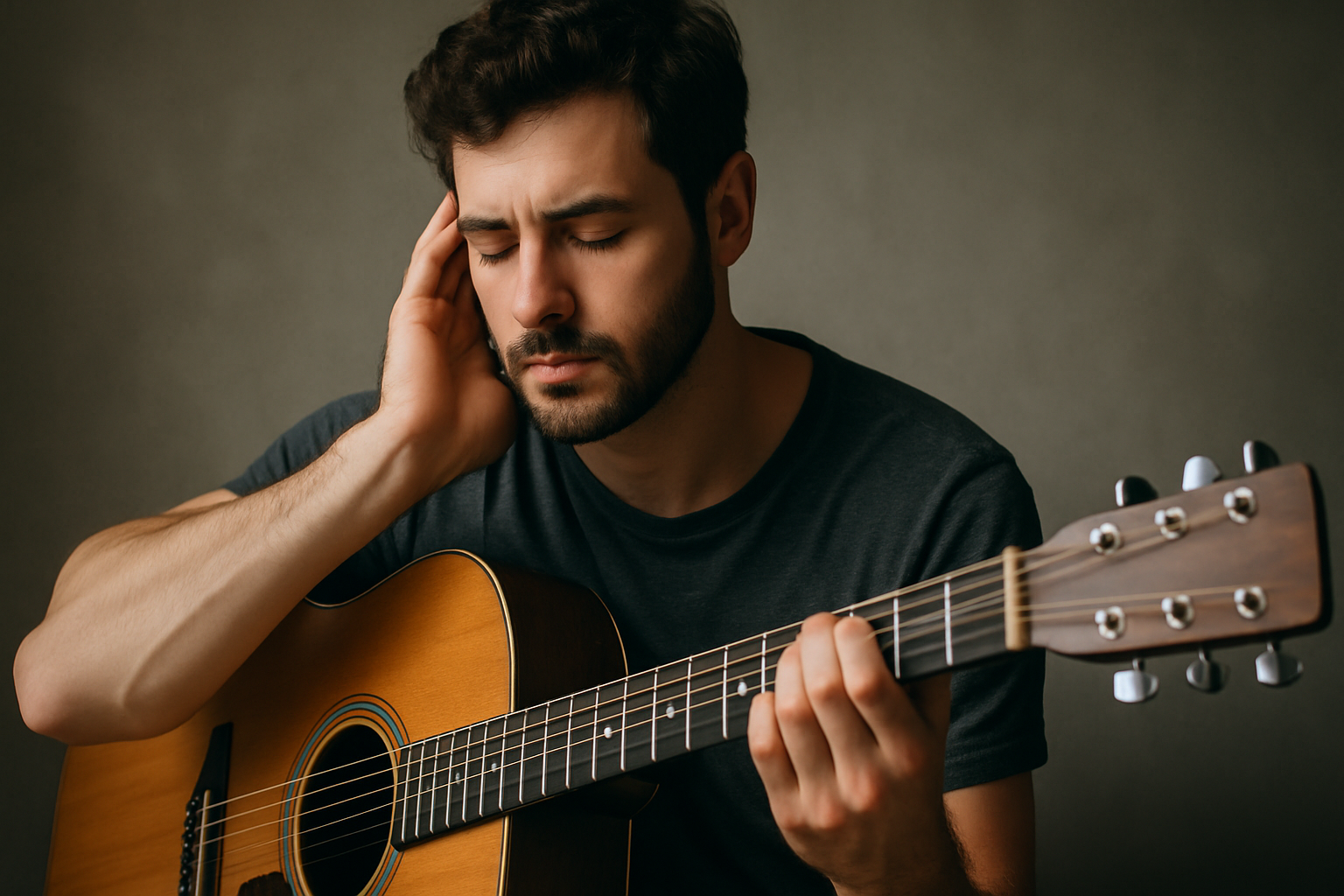Many beginner musicians focus so much on hitting the right notes, following the sheet music, or keeping up with the tempo that they forget one of the most fundamental aspects of music-making: listening to themselves while they play. This ability may sound simple, but it is often neglected. Without it, practice becomes mechanical, performances sound flat, and progress slows down.
Learning to listen actively to your own playing is like turning on a mirror for sound. It allows you to notice flaws before they become habits, refine your tone, and connect more deeply with your music. It transforms practice sessions from mindless repetition into meaningful growth. In this article, we will explore why self-listening matters, what challenges beginners face, and how you can cultivate this essential habit through practical strategies and exercises.
Why Listening to Yourself Matters
Improves Accuracy
When you really hear what you are playing, you notice immediately if a note is sharp, if a chord is muddy, or if a rhythm is slightly rushed. This awareness prevents mistakes from becoming ingrained.
Builds Expression
Music is more than playing the “right” notes. Listening helps you shape phrasing, dynamics, and articulation with intention. Without listening, it’s easy to sound robotic.
Encourages Independence
Musicians who listen actively develop self-correction skills. Instead of waiting for a teacher to point out mistakes, you become your own coach.
Enhances Ensemble Playing
If you can’t listen to yourself, it’s difficult to balance with others. Ensemble players must hear both their own sound and the group sound simultaneously.
Deepens Emotional Connection
When you listen attentively, you don’t just “play through” the music—you feel it. This emotional connection is what makes music rewarding.
Barriers to Listening While Playing
Even though listening sounds simple, beginners often struggle with it. Some common challenges include:
- Over-Focus on Mechanics
Thinking only about finger positions, bowing, or breath leaves little room for awareness of sound. - Fear of Mistakes
Some students avoid listening too closely because they don’t want to confront imperfections. - Mental Overload
When you’re learning something new, there’s so much to think about that listening slips into the background. - Performance Anxiety
On stage, nerves can overwhelm your ability to hear yourself clearly.
Recognizing these barriers is the first step toward overcoming them.
Strategies to Develop Self-Listening
1. Record Yourself
Recording is one of the most effective tools. Listening back lets you step outside the moment and hear your playing as an audience would.
2. Slow Practice
Reducing tempo gives your mind space to notice tone, rhythm, and balance. Slow practice builds awareness without overwhelming you.
3. Focus on One Element at a Time
Instead of trying to hear everything, choose one aspect per session: tone, intonation, dynamics, or rhythm. This structured listening builds focus.
4. Alternate Listening and Playing
Play a short phrase, stop, and hum or whistle it back. Then compare what you produced to what you intended.
5. Use Mirrors and Videos
Visual feedback supports listening. For example, watching posture and breath helps you connect physical actions with sound quality.
6. Sing Before You Play
Singing forces you to internalize how the music should sound. Playing afterward makes it easier to compare what you intended with what you produced.
7. Be Gentle With Yourself
Listening does not mean criticizing harshly. Approach your sound with curiosity and patience.
Practical Exercises for Self-Listening
- Tone Quality Scale
Play a scale focusing only on producing the richest tone possible. Ignore speed and technique—just listen to color. - Dynamic Contrast Drill
Play the same phrase softly, then loudly, then with a crescendo. Notice how timbre and emotion change. - Silent Pause Exercise
After a passage, pause in silence and reflect on what you heard. Mentally note one thing you liked and one thing to improve. - Balance Practice
For pianists, try balancing melody against accompaniment. For ensemble players, try blending with one partner’s sound. - Call and Response With Yourself
Play a short phrase, then play it again with more expression, as if you were responding to yourself.
Listening in Different Instruments
- Pianists: Must balance voices, ensuring melody stands out from harmony.
- Guitarists: Need to listen to resonance, muting, and tone production.
- Singers: Must hear pitch accuracy and vowel clarity.
- Wind/Brass Players: Listening ensures steady airflow and consistent tone.
- Drummers: Must balance volume and groove, listening to timing and feel.
Each instrument requires unique self-listening, but the principle is universal: hear and refine your own sound.
The Role of Teachers in Self-Listening
Teachers can model listening by asking students questions like:
- “Did you hear how the tone changed in that phrase?”
- “How does the second note compare to the first?”
Good teachers don’t just correct mistakes—they train students to hear them independently.
The Psychological Side of Listening
Reduces Anxiety
Focusing on sound grounds you in the present, reducing nervousness.
Builds Confidence
When you trust your ability to hear and correct yourself, performance feels less intimidating.
Encourages Joy
Listening allows you to appreciate the beauty of the sound you create, even in practice.
Long-Term Benefits of Listening to Yourself
- More accurate intonation and rhythm.
- Stronger control over expression.
- Greater independence from teachers or sheet music.
- Deeper connection with music.
- More engaging performances for audiences.
Final Thoughts: Becoming Your Own Best Teacher
Learning to listen to yourself while playing is not a luxury—it’s a necessity. It transforms practice from mechanical exercise into artistic exploration. It turns mistakes into opportunities and music into communication.
The next time you sit at your instrument, ask yourself: Am I really listening? By developing this habit, you’ll grow not only as a musician but also as a communicator of emotion. In the end, the best musicians are not just skilled players—they are skilled listeners.
